Tokina FiRIN 100mm F2.8 FE Sony Handleiding
Bekijk gratis de handleiding van Tokina FiRIN 100mm F2.8 FE Sony (4 pagina’s), behorend tot de categorie Lens. Deze gids werd als nuttig beoordeeld door 46 mensen en kreeg gemiddeld 4.5 sterren uit 23.5 reviews. Heb je een vraag over Tokina FiRIN 100mm F2.8 FE Sony of wil je andere gebruikers van dit product iets vragen? Stel een vraag
Pagina 1/4

①
②
③
⑤
④
How to attach and remove lens
Please follow the camera instruction manual for attaching and removing
the lens.
※Take care to not touch or hit electrical contacts on the mounting face
of the lens while attaching or removing.
Aperture Settings
Please set the aperture settings on the camera side in accordance with
the shooting mode.
Focusing
■ Auto Focus
Set your camera’s focus mode to Auto Focus (AF).
The camera will automatically focus when the shutter button is
half-pushed.
■ Manual Focus
Set your camera’s focus mode to manual Focus (MF).
Adjust focus by turning the focus ring while observing the camera
monitor and finder image.
It is also possible to conduct precision focusing using the display
enlarging function.
[Full-time Manual Function]
With this lens, it is possible to make slight focal adjustments manually
while the camera is in use with autofocus mode without switching the
focus mode.
Set the focus mode of the camera to Direct Manual Focus (DMF). Then,
focus using the autofocus function, and with the shutter button still in
the half-pushed position, make slight focal adjustments by turning the
focus ring. This is for precision focusing when taking portraits and when
conducting macro photography.
The focus ring spins in the same direction as other genuine lenses
manufactured by us.
ENGLISH
SONY E-Mount Full Frame In macro photography, the subject and lens become very close and the
magnification increases as a result. Therefore, even a slight vibration or
movement of the camera can affect image quality. In macro photogra-
phy, hold the camera securely to eliminate vibrations. For vibration-free
photographs Tokina highly recommends the use of a tripod, cable
release and/or a wireless remote control and an external flash.
Note on Macro Photography
Filter
Note for using a built-in flash
When shooting using the camera's built-in flash or the small specialized
flash included with the camera, the lens may block some of the light
causing a noticeable shadow in the picture. In such cases please use an
external flash.
When the lens hood is attached, it can sometimes block the light from
even large-size flashes. If this happens, please remove the lens hood
while the camera is in use.
Please use round screw-in filters. If there is grime or water drops on the
filter, it will cause lens flare and ghosting. Be sure to clean the filter
thoroughly before taking pictures.
※Please use only one filter at a time. If more than one is used at the same
time, it may cause vignetting.
Filter
100mm F2.8 FE MACRO
Part names
① Hood attachment mark
② Focus ring
③ Lens holding grip
④ Mount attachment mark
⑤ Lens signal contact ※
※ Please do not touch directly with hands.
When conducting macro photography, the lens barrel extends and the
effective F-value changes based on the photographing magnification
ratio, but when photographing under normal conditions, the camera
automatically compensates.
Line up the mark on the lens
hood’s side with the white hood
attachment mark on the lens
barrel, then turn the hood
clockwise unlike you feel and hear
the hood click into place.
Vignetting may occur if the hood is
not attached correctly.
⑥ Photographing distance (m)
⑦ Photographing magnification
⑧ Photographing distance (ft)
Exposure Magnification for Macro Photography
The included lens hood prevents strong angular light from the side from
striking the front lens element and causing lens flare or ghosting that
would impact image quality.
Please be sure to always use the lens
hood when photographing to achieve
the best results possible.
■Attaching the lens hood
Line up the mark on the lens hood’s side
with the white hood attachment mark on
the lens barrel, then turn the hood
clockwise unlike you feel and hear the
hood click into place.
Vignetting may occur if the hood is not
attached correctly.
Lens hood
Hood attachment mark
⑦⑥ ⑧
■
Photographing Distance and Magnification Index when the lens
is extended
The table shown at right lists
the exposure magnications
and aperture openings at
dierent macro magnications
of 1:10 and above. If you don’t
want to change the aperture
setting, correct the exposure by
changing the shutter speed.
approx. +1/3 EV
approx. +2/5 EV
approx. +1/2 EV
approx. +2/3 EV
approx. +4/5 EV
approx. +1 EV
approx. +1 1/5 EV
approx. +1 2/5 EV
approx. +1 1/2 EV
approx. +1 2/3 EV
approx. +1 4/5 EV
approx. +2 EV
1.23
1.33
1.47
1.59
1.82
2.01
2.31
2.60
2.88
3.24
3.80
4.00
1:10
1:7
1:5
1:4
1:3
1:2.5
1:2
1:1.7
1:1.5
1:1.3
1:1.1
1:1
Macro
magnication
Exposure
magnication
Aperture
openings
※The marking (certication mark for conformance with the European export
inspection requirements) is shown on lenses containing electronic parts. The mark
also declares compliance with environmental performance standards for products
stipulated in the RoHS directive.
※ A display mark indicating inclusion in the China RoHS directive (Administra-
tive Measure on the Control of Pollution Caused by Electronic Information
Products).
Performance table
100 mm
F2.8
F32
9 - 8
(elements/groups)
24.5°
0.3 m
1 : 1
9
Ø 55 mm
123~169 mm
(When front lens element is extended)
Focal distance
Maximum aperture
Minimum aperture
Lens conguration
Angle of view
Minimum focus distance
Maximum macro magnication
Diaphragm blades
Filter size
Overall length
Please note that specications and appearance may be changed without notice to
improve the product.
Basic Care and Storage
Avoid any shock or impact to the lens or exposure to extremely high or
low temperature or high humidity.
To prevent outbreak of the mold, keep lens surface clean after use of
lens. Do not use paint thinner, benzene, or other organic agents to
remove dirt or finger prints from the lens elements. Clean with a soft
moistened lens cloth or lens tissue.
In caring for the exterior of the lens, always wipe any dirt, dust or debris
with a chamois or silicone cloth. Make sure the barrels of the lens are
clean, not only the front and rear elements.
Select a cool and dry place for extended storage, preferably with good
ventilation. To avoid damage to the lens coating, keep the lens away
from mothballs or naphthalene gas.
This lens is not waterproof. If using this lens in the rain or near water,
keep it from getting wet. It is often impractical to repair a lens or its
components when damaged by water.
Sudden changes in temperature may cause condensation or fog on
the lens elements. When entering a warm room from the cold, it is
advisable to keep the lens in a case until the temperature of the lens
reaches the temperature of the room.
•
•
•
•
•
•
Maximum diameter
Weight
Hood
Ø 74 mm
570 g
Bayonet hood BH-553
Bezeichnung der Teile
DEUTSCH
SONY E-Fassung
Vollformat
① Anbringungsmarkierung für die Streulichtblende
② Fokusring
③ Objektivhaltegri
④ Befestigungsmarkierung Montieren
⑤ Objektivsignalkontakte ※
※ Bitte nicht direkt mit den Fingern berühren.
Einstellung der Blende
Stellen Sie die Blende bitte je nach Aufnahmeart an der Kamera ein.
Objektiv ansetzen und abnehmen
Bitte befolgen Sie die Bedienungsanleitung für das Anbringen und
Entfernen des Objektivs an der Kamera.
※Achten Sie darauf, beim Ansetzen und Abnehmen des Objektivs nicht
die elektrischen Kontakte an der Fassungsfläche zu berühren oder
dagegen zu stoßen.
Anbringungsmarkierung
für die Streulichtblende
Grundlegende Pflege und Lagerung
Jegliche Erschütterungen oder Stöße gegen das Objektiv sowie
extrem hohe oder tiefe Temperaturen und hohe Feuchtigkeit
vermeiden.
Reinigen Sie das Objektiv nach Gebrauch, um Schimmelbildung zu
vermeiden. Keinen Verdünner, Benzin oder andere organische Mittel
verwenden, um Schmutz oder Fingerabdrücke auf dem Objektiv zu
beseitigen. Verwenden Sie ein weiches, angefeuchtetes Optikreini-
gungstuch oder Optik-Reinigungspapier.
Bei der Pflege der äußeren Linse Schmutz oder Rückstände immer mit
einem Chamois- oder Silikontuch abwischen. Achten Sie darauf, dass
auch der Objektivtubus sauber ist und nicht nur die vorderen und
hinteren Elemente.
Wählen Sie einen kühlen und trocken, vorzugsweise gut gelüfteten
Ort, um das Objektiv langfristig zu lagern. Halten Sie das Objektiv fern
von Mottenkugeln oder Naphthalengas, um Beschädigungen der
Linsenbeschichtung zu vermeiden.
Das Objektiv ist nicht wasserfest. Achten Sie darauf, dass das Objektiv
nicht nass wird, wenn Sie es im Regen oder in der Nähe von Wasser
verwenden. Es ist oft unmöglich ein Objektiv oder deren Teile zu
reparieren, wenn diese durch Wasser geschädigt wurden.
Plötzliche Temperaturänderungen können zur Bildung von Kondensa-
tionswasser auf den Objektivelementen führen.
Es ist ratsam, das Objektiv in einem Etui zu belassen bis es Raumtem-
peratur erreicht hat, wenn Sie aus der Kälte in einen warmen Raum
kommen.
•
•
•
•
•
•
①
②
③
⑤
④
Hinweise betreffs Makrofotografie
Bei der Makrofotografie kommen sich Linse und Bildgegenstand sehr
nahe, so dass sich die Vergrößerung erhöht. Daher können selbst
geringfügige Erschütterungen oder Bewegungen die Bildqualität
beeinflussen. Halten Sie die Kamera bei Makroaufnahmen gut fest, um
Erschütterungen zu minimieren. Tokina empfiehlt, für erschütterungs-
freie Fotos ein Stativ, einen Kabelauslöser oder eine kabellose Fernsteuer-
ung und ein externes Blitzgerät zu verwenden.
Filter
Bitte verwenden Sie runde Einschraubfilter. Wenn der Filter verschmutzt
ist oder Wasser darauf tropft, kann es zu Streulichteffekten oder
Geisterbildern kommen. Achten Sie bitte darauf, vor dem Fotografieren
den Filter sorgfältig zu reinigen.
※Bitte verwenden Sie immer nur einen Filterzur gleichen Zeit. Wenn
gleichzeitig mehr als ein Filter verwendet wird, kann es zu
Vignettierung kommen.
Vorsichtsmaßnahmen bei der Verwendung des
eingebauten Blitzlichts
Bei Aufnahmen mit in der Kamera eingebautem Blitzlicht oder einem mit
der Kamera mitgelieferten Spezialmini Blitzlicht kann ein Teil des Lichtes
vom Blitzlicht verdeckt werden und ein Schatten des Objektives mit
abgebildet werden. Verwenden Sie in diesem Fall bitte ein externes
Blitzlicht.
Wenn man die Gegenlichtblende verwendet, kann es vorkommen, dass
bei einem großen Blitzlicht, das Licht blockiert wird. In so einen Fall soll
man bei der Benutzung die Gegenlichtblende entfernen.
Fokuseinstellung
■ Fokuseinstellung mit Autofokus
Bitte stellen Sie vor dem Gebrauch, den Fokusmodus von Ihrer Kamera
auf „AF“ ein. Bitte drücken Sie den Auslöserknopf halb durch und stellen
Sie automatisch den Fokus ein.
■ Manuelle Fokuseinstellung
Bitte stellen Sie vor dem Gebrauch den Fokusmodus von Ihrer Kamera
auf „MF“ ein.
Drehen Sie den Fokusring. Vergewissern Sie sich das Bild durch den
Kameramonitor oder den Sucher und stellen Sie den Fokus ein.
Durch das verwenden einer "Anzeige-Vergrösserungsfunktion", ist eine
sehr exakte Fokuseinstellung möglich.
[Vollzeit-Manuellfunktion]
Mit dieser Linse kann man, während man mit Autofokus fotografiert,
ohne den Autofokus von der Kamera umzustellen, manuell den Fokus
fein einstellen.
Man stellt den Autofokus von der Kamera auf „DMF“ und stellt mit
Autofokus den Fokus ein. Während man den Auslöseknopf halb gedrückt
hält, kann man am Fokusring drehen, um den Fokus sehr fein einzustel-
len.
Die Drehrichtung von dem Fokusring ist genau die selbe Richtung wie
bei der herstelleroriginalen Linse.
Die mitgelieferte Streulichtblende verhindert, dass starkes Seitenlicht auf
die vordere Linse fällt und Lichtreflexe oder Geisterbilder hervorruft,
welche die Bildqualität beeinflussen würden.
Bitte achten Sie darauf, beim Fotografieren immer diese Streulichtblende
zu verwenden, um die bestmöglichen Ergebnisse zu erhalten.
※Wir empfehlen, immer die mitgelieferte Streulichtblende zu
verwenden, um Streulicht abzuschirmen, welches sonst zu Lichtreflex-
en oder Geisterbildern führen könnte.
■Anbringen der Streulichtblende
Die Markierung auf der Seite der
Streulichtblende auf die weiße
Anbringungsmarkierung auf dem
Objektivtubus ausrichten und
anschließend die Blende im
Uhrzeigersinn drehen, bis Sie sie
einrasten fühlen.
Vignettierung kann auftreten, wenn die
Streulichtblende nicht richtig angebracht
ist.
Streulichtblende
Bei der Makroaufnahme wird das Objektivrohr Herausgezogen. Durch
die Aufnahmevergrößerung wird sich der ausgeführte F-Wert verändern.
Bei normalen Aufnahmen, wird der veränderte Wert automatisch von der
Kamera korrigiert.
Wenn man für Makroaufnahmen
die Linse herausgezogen hat, kann
man die Aufnahmeentfernung
und die Vergrößerung ablesen.
Bitte benutzen Sie diese Tabelle als
Maßstab für Ihre Aufnahme. Wenn
man den Belichtungsmesser für
Draußen benutzt, wird eine
Belichtungskorrektur notwendig.
Bitte verwenden Sie die unten
angegebene Liste, um nachzus-
chauen, welche Verbersserungs-
menge Sie einstellen sollten.
⑥ Aufnahmeentfernung (m)
⑦ Vergrößerungsindex
⑧ Aufnahmeentfernung (ft)
Der Belichtungsfaktor bei der Makroaufnahme
⑦⑥ ⑧
■
Die Aufnahmeentfernung
Die rechts stehende Tabelle zeigt
die Belichtungsverlängerungen
und Blendenönungen für
unterschiedliche Makro
Vergrößerungen von 1:10 und
darüber. Korrigieren Sie bitte die
Belichtung durch Änderung der
Verschlusszeit, falls Sie die
Blendeneinstellung ändern
möchten.
ca. +1/3 EV
ca. +2/5 EV
ca. +1/2 EV
ca. +2/3 EV
ca. +4/5 EV
ca. +1 EV
ca. +1 1/5 EV
ca. +1 2/5 EV
ca. +1 1/2 EV
ca. +1 2/3 EV
ca. +1 4/5 EV
ca. +2 EV
1.23
1.33
1.47
1.59
1.82
2.01
2.31
2.60
2.88
3.24
3.80
4.00
1:10
1:7
1:5
1:4
1:3
1:2.5
1:2
1:1.7
1:1.5
1:1.3
1:1.1
1:1
Abb.-
Maßstab
Belichtung
verlängern
Blende
önen um
Technische Daten
100 mm
F2.8
F32
9 Linsen in 8 Gruppen
24.5°
0.3 m
1 : 1
9
Ø 55 mm
123~169mm
(
Wenn die vordere Kugel herausgezogen ist
)
Brennweite
Max. Blendenönung
Min. Blendenönung
Optischer Aufbau
Bildwinkel
Min. Aufnahmeabstand
Max. Makrovergrößerung
Irisblende
Filtergröße
Länge
Durchmesser
Gewicht
Streulichtblende
Ø 74 mm
570 g
Bajonettblende BH-553
Bitte beachten Sie, dass die technischen Daten und das Aussehen zur
Verbesserung des Produktes ohne vorherige Ankündigung geändert
werden können.
※Die Kennzeichnung wird auf Objektiven mit elektronischen Teilen
(Zertikationsmarke zur Bestätigung der Übereinstimmung mit den
europäischen Anforderungen an die Exportinspektion) angebracht.
Diese Markierung erklärt gleichzeitig auch die Übereinstimmung mit in
den RoHS Richtlinien vorgegebenen Umweltleistungsnormen.
※
Diese Markierung zeigt den Einschluss in die China RoHS Richtlinien
Markierung (verwaltungstechnische Maßnahme zur Kontrolle von
durch elektronische Informationsprodukte verursachte Verschmutzu-
ng) an.
FRANÇAIS Monture
Sony E Plein Format
①
②
③
⑤
④
Nomenclature
① Repère de montage du pare-soleil
② Bague de mise au point manuelle
③ Prise de maintien de l’objectif
④ Repère de montage de l’objectif
⑤ Contact de l’objectif ※
※ Ne pas toucher directement avec les doigts
Réglage de l’ouverture du diaphragme
Veuillez régler l’ouverture sur votre appareil photo en fonction du mode
de prise de vue.
Montage / démontage de l’objectif
Veuillez suivre les instructions fournies avec votre appareil photo
concernant le montage de l'objectif sur l'appareil et son démontage.
* Lorsque vous montez ou démontez l'objectif, veillez à ne pas toucher
les contacts électroniques et préservez-les des chocs.
Repère de montage
du pare-soleil
Remarque sur la macrophotographie
La macrophotographie consiste à fortement rapprocher le sujet et
l'objectif pour augmenter le grossissement. Par conséquent, une
vibration ou un mouvement même infime de l'appareil peut avoir un
impact négatif sur la qualité d'image. Pour la macrophotographie, veillez
donc à tenir fermement l'appareil pour éliminer toute vibration. Pour des
photographies sans vibration, Tokina recommande fortement d'utiliser
un trépied, un déclencheur souple et/ou une télécommande et un flash
externe.
Mise au point
■ Mise au point automatique
Réglez le mode de mise au point de votre appareil photo sur « AF ».
L'appareil photo règle automatiquement le la mise au point en appuyant
à mi-course sur le déclencheur.
■ Mise au point manuelle
Réglez le mode de mise au point de votre appareil photo sur « MF ».
Tournez la bague de mise au point et effectuez la mise au point tout en
vérifiant l'image sur le moniteur de l'appareil photo et le viseur.
Il est également possible de faire une mise au point rigoureuse en
utilisant la fonction d’agrandissement de l’affichage.
[Mise au point manuelle directe (DMF)]
Cet objectif vous permet de régler manuellement la mise au point sans
changer de mode de mise au point lors de la prise de vue avec mise au
point automatique.
Réglez le mode de mise au point de l'appareil photo sur « DMF »,
effectuez une mise au point avec mise au point automatique, tournez la
bague de mise au point tout en appuyant à mi-course sur le déclencheur
et effectuez un réglage précis. Utilisez-le pour un rendu de portrait et
pour la mise au point sur une prise de vue macro.
Le sens de rotation de la bague de mise au point est le sens de rotation
avec l'objectif d'origine.
Le pare-soleil est conçu pour éviter la formation de flare ou d'images
fantôme, qui apparaissent quand les rayons lumineux obliques
atteignent la lentille frontale et qui auraient un impact sur la qualité de
l'image.
Utilisez toujours un pare-soleil lorsque vous photographiez afin d'obtenir
les meilleurs résultats possibles.
* Nous recommandons de laisser le pare-soleil fixé en permanence sur
l'objectif afin de bloquer les rayons parasites, qui dans le cas contraire
causeraient du flare ou des images fantôme.
■Comment fixer le pare-soleil
Monter le pare-soleil sur l'objectif en
alignant la flèche de repère du pare-soleil
avec le point de repère blanc de montage
du pare-soleil de l'objectif.
Fixer le pare-soleil en le tournant dans le
sens des aiguilles d’une montre jusqu'au
clic de butée.
Il peut y avoir un effet de vignettage si le
pare-soleil n’est pas fixé correctement.
Pare-soleil
Le barillet de l'objectif est déployé pendant la prise de vue macro et la
valeur F change en fonction de l'agrandissement, mais en mode de prise
de vue normal, l'appareil photo le corrige automatiquement.
Vous pouvez vérifier la distance de
prise de vue et le grossissement
lorsque l'objectif est déployé avec
la distance macro. Utilisez-le
comme guide pour la prise de vue.
La compensation d'exposition est
nécessaire lors de l'utilisation d'un
posemètre externe. Reportez-vous
au tableau ci-dessous et définissez
la quantité de correction.
⑥ Distance de prise de vue (m)
⑦ Ratio de grossissement macro
⑧ Distance de prise de vue (ft)
Compensation d'exposition pour prise de vue macro
⑦⑥ ⑧
■
Distance de prise de vue, indice de grossissement lorsque
l'objectif est déployé
Lors de l'utilisation d'un flash
externe, il est nécessaire de
prendre en compte l'ajout
d'exposition (multiple d'exposi-
tion) à la diminution de la luminos-
ité due au facteur de grossisse-
ment de l'image. Corrigez
l'exposition en vous reportant au
tableau.
environ. +1/3 EV
environ. +2/5 EV
environ. +1/2 EV
environ. +2/3 EV
environ. +4/5 EV
environ. +1 EV
environ.
+1 1/5 EV
environ.
+1 2/5 EV
environ.
+1 1/2 EV
environ.
+1 2/3 EV
environ.
+1 4/5 EV
environ
. +2 EV
1.23
1.33
1.47
1.59
1.82
2.01
2.31
2.60
2.88
3.24
3.80
4.00
1:10
1:7
1:5
1:4
1:3
1:2.5
1:2
1:1.7
1:1.5
1:1.3
1:1.1
1:1
Ratio de
grossissement
Multiple
d'exposition
Compensation
d'ouverture
Filtre
Veuillez utiliser des filtres filetés. Vous ne pourrez pas prendre de
photographies parfaites si le filtre est sale ou présente des gouttes d’eau
ou d’autres particules étrangères. Nettoyez soigneusement le filtre avant
de prendre des photos.
* N’utiliser qu’un filtre à la fois. Si deux filtres ou davantage sont utilisés en
même temps, un effet de vignettage (assombrissement aux coins de
l'image) peut se produire.
Avertissement au sujet de l’utilisation d’un flash intégré
Lors de la prise de photo avec un flash intégré à l’appareil photo ou avec
un petit flash inclus avec l’appareil, il est possible que la lumière du flash
soit obstruée par l’objectif et que l’ombre de l’objectif apparaisse dans
l’image. Il est recommandé d’utiliser un flash externe.
Lorsque le pare-soleil est fixé, même la lumière d’un gros stroboscope
sera bloquée. Dans ce cas, veuillez retirer le pare-soleil avant utilisation.
Conseils d’entretien et de stockage
Évitez tout choc, impact sur l'objectif ou exposition à des températures
extrêmement élevées ou extrêmement basses, ainsi qu'à une
humidité élevée.
Pour éviter la moisissure, nettoyez la surface de l’objectif après son
utilisation. Ne pas utiliser de diluant à peinture, benzène, ou d'autres
agents biologiques pour éliminer les traces de saleté ou de doigts des
éléments de l’objectif. Nettoyer avec un chiffon doux humide ou un
mouchoir.
Pour nettoyer l'extérieur de l’objectif, essuyez toujours la saleté, la
poussière ou les débris avec une peau de chamois ou un chiffon à base
de silicone. Assurez-vous que le fût de l'objectif soit propre, pas
seulement les éléments avant et arrière.
Choisissez un endroit frais et sec pour le stockage prolongé, de
préférence avec une bonne ventilation. Afin d’éviter d'endommager le
revêtement de l’objectif, éloigner l’objectif de la naphtaline ou du gaz
naphtalène.
Cet objectif n'est pas étanche. Si vous utilisez cet objectif en cas de
pluie ou à proximité de l’eau, ne le mouillez pas. Il est souvent impossi-
ble de réparer un objectif ou ses composants lorsqu'ils sont
endommagés par l'eau.
Les changements brusques de température peuvent provoquer de la
condensation sur les éléments de l’objectif.
Lorsque vous entrez dans une pièce chaude quand il fait froid dehors,
il est conseillé de garder l’objectif dans une housse jusqu'à ce que la
température de l’objectif atteigne la température de la pièce.
•
•
•
•
•
•
*La marque (marque de certication de conformité pour les
produits Européens) est achée sur les optiques contenant des
composants électroniques. La marque déclare également respecter les
normes de performance environnementales pour les produits stipulés
dans la directive RoHS.
* L'objectif porte une marque indiquant l'inclusion dans la directive
RoHS de la Chine (mesure administrative sur le contrôle de la pollution
causée par les produits électroniques).
Tableau de performance
Veuillez noter que les spécications et l'aspect peuvent être modiés
sans préavis pour améliorer le produit.
100 mm
F2.8
F32
9-8 (éléments/groupes)
24.5°
0.3 m
1 : 1
9
Ø 55 mm
Distance focale
Ouverture maximum
Ouverture minimum
Construction optique
Angle de champ
Distance minimale de MAP
Ratio de grossissement macro
Nombre de lamelles
de diaphragme
Diamètre du ltre
Diamètre maximum
Poids
Pare-soleil
Ø 74 mm
570g
Pare-soleil monture baïonnette BH-553
123~169mm
(Quand le barillet de l'objectif est déployé)
Longueur totale
ESPAÑOL
SONY E-Mount de
Fotograma Completo
① Marca de ajuste del parasol
② Anillo de enfoque
③ Empuñadura para sujetar el objetivo
④ Indicador de la montura del objetivo
⑤ ※ Contactos del objetivo
※ No tocar directamente con la mano.
①
②
③
⑤
④
Ajuste de la apertura
El ajuste de la apertura se realiza en la cámara de acuerdo al modo de
disparo.
Notas sobre Macro Fotografía
En macro-fotografía, el sujeto y el objetivo están en una posición muy
cercana, de ahí la ampliación. Por tanto, cualquier vibración o movimien-
to de la cámara afectará la calidad de la fotografía. Para este tipo de fotos,
hay que asegurar bien la cámara a fin de eliminar las vibraciones. Por ello
Tokina recomienda el uso de un trípode, cable disparador y/o control
remoto así como flash externo.
Forma de acoplar y retirar el objetivo
Por favor siga el manual de instrucciones para acoplar y retirar el objetivo.
* Tenga cuidado para no tocar o golpear los contactos electrónicos del lado
de la montura de la lente, en el momento de acoplar o retirar el objetivo.
Nombre de las partes
Cuidados al utilizar el flash incorporado
En caso de utilizar el flash incorporado o un flash pequeño especial para
la cámara, el objetivo puede obstruir la luz de este, pudiendo aparecer
una sombra del objetivo en la imagen. En estos casos, utilizar un flash de
uso externo.
Cuando se tiene instalado el parasol del objetivo, este puede bloquear el
destello de la luz estroboscópica, inclusive una de gran tamaño.
Filtro
Utilizar filtros con rosca circular. Si hay suciedad o gotas de agua en el
filtro, puede causar reflejos indeseados e imágenes superpuestas.
Asegúrese de limpiar bien el filtro antes de tomar fotografías.
* Por favor utilizar solo un filtro a la vez. Si se utiliza más de uno a la vez,
puede causar viñeteado.
Marca de ajuste del
parasol
El parasol incluido con el objetivo, previene que una fuerte luz angular
proveniente de los lados, impacte directamente en la parte frontal de la
lente, lo que puede ocasionar halo o imágenes fantasma, afectando la
calidad de las fotografías.
Por favor asegurarse de usar siempre el parasol en el momento de hacer
tomas, para obtener los mejores resultados posibles.
* Recomendamos que siempre tenga el parasol acoplado al objetivo,
para evitar la luz directa que puede causar halo o imágenes fantasma.
Alinee la marca del parasol del objetivo
con la marca blanca de la parte del
acoplamiento en el cañón del objetivo,
luego hacer rodar el parasol en sentido
horario hasta escuchar o sentir que el
parasol se p1-ha ajustado en el lugar
apropiado.
Puede ocurrir viñeteado si el parasol no
está ajustado adecuadamente.
Parasol del objetivo
Enfoque
■ Enfoque automático
Utilizar configurando la cámara en enfoque automático (AF).
Presionando el disparador hasta la mitad, el sistema de la cámara realiza
el enfoque automático.
■ Enfoque manual
Utilizar configurando la cámara en enfoque manual (MF).
Ajustar el enfoque moviendo el anillo de enfoque, mientras se verifica la
imagen en el visor o del monitor de la cámara
Se puede lograr un enfoque más preciso utilizando la función de
ampliación de pantalla.
[Función de enfoque manual todo el tiempo]
Con este objetivo, mientras se toma en modo de enfoque automático, se
puede ajustar manualmente sin cambiar el modo de enfoque.
Colocar el modo de enfoque de la cámara en “DMF”, utilizar el enfoque
automático para realizar el enfoque, luego puede realizar ajustes al
enfoque presionando el disparador hasta la mitad, haciendo girar el
anillo de enfoque. Se puede usar para tomas que necesitan un enfoque
preciso, como retratos o tomas macro.
La dirección de rotación del anillo de enfoque es la misma que la del
lente de corrección.
■Forma de colocar el parasol del objetivo
Durante una toma macro, el cilindro del objetivo se extiende y el número
F cambia según la ampliación de la toma, sin embargo, en condiciones
normales el sistema de la cámara realizará la corrección automática-
mente.
Se puede verificar la distancia de
enfoque y la macro-magnificación
de la distancia macro cuando el
objetivo está extendido. Le puede
servir como referencia al momento
de hacer tomas.
Cuando se utiliza un fotómetro
externo es necesario compensar la
exposición. Para configurar la
cantidad de compensación,
consultar con la tabla a continu-
ación.
⑥ Distancia de enfoque (m)
⑦ Coeficiente de magnificación
⑧ Distancia de enfoque (ft)
Corrección de Exposición
⑦⑥ ⑧
■
Distancia de enfoque y coeficiente de magnificación cuando
el objetivo está extendido
Cuando se utiliza luz estroboscópi-
ca para el control de luz externa, es
necesario tomar en cuenta la
compensación para aumentar la
exposición (factor de aumento de
la exposición), por la pérdida de la
luminosidad debido a la
magnificación de la toma.
Compensar la exposición tomando
como referencia la tabla a continu-
ación.
Aprox. +1/3 EV
Aprox. +2/5 EV
Aprox. +1/2 EV
Aprox. +2/3 EV
Aprox. +4/5 EV
Aprox. +1 EV
Aprox.
+1 1/5 EV
Aprox.
+1 2/5 EV
Aprox.
+1 1/2 EV
Aprox.
+1 2/3 EV
Aprox.
+1 4/5 EV
Aprox. +2 EV
1.23
1.33
1.47
1.59
1.82
2.01
2.31
2.60
2.88
3.24
3.80
4.00
1:10
1:7
1:5
1:4
1:3
1:2.5
1:2
1:1.7
1:1.5
1:1.3
1:1.1
1:1
Magni
-cación
de la toma
Factor de
aumento de
la exposición
Cantidad de
apertura
del diafragma
Tenga en cuenta que las especicaciones y la apariencia del objetivo
pueden ser cambiadas sin previo aviso, para la mejora del producto.
* El marcado se muestra en lentes que contienen partes electróni-
cas (marca de certicación de acuerdo con los requerimientos
Europeos de inspección para la exportación). La marca también indica
la declaración del cumplimiento de las normas de comportamiento
medioambiental de los productos estipulados en la directiva RoHS.
* Marca indicando la inserción en la directiva RoHS de China (Medición
Administrativa para el Control de Polución Causada por Productos de
Información Electrónica)
Tabla de especificaciones
100 mm
F2.8
F32
9 – 8
24.5°
0.3 m
1 : 1
9
Ø 55 mm
Distancia focal
Apertura máxima
Apertura mínima
Conguración del objetivo
(elementos/grupos)
Ángulo de visión
Distancia mínima de enfoque
Máxima macro-magnicación
Hojas del diafragma
Tamaño del ltro
Longitud total
Diámetro máximo
Peso
Parasol
Ø 74 mm
570 g
Parasol tipo bayoneta BH-553
Cuidados básicos y almacenamiento
Evite cualquier golpe o impacto en la lente o la exposición a tempera-
turas extremadamente altas o bajas, así como también evitar la
humedad excesiva.
Para prevenir deterioro, mantener limpia la superficie de la lente
después de utilizarla. No usar disolvente para pintura, benceno u otros
agentes orgánicos para limpiar la suciedad o las huellas digitales
impregnadas en el lente. Limpiar con una tela suave y humedecida o
un paño de papel.
Cuando se saca el objetivo a exteriores, limpiar constantemente la
suciedad, polvo o residuos, con una tela de gamuza o silicona.
Asegurarse que las paredes del objetivo estén limpias, no solamente
de la parte frontal o posterior.
Seleccionar un lugar frío y fresco cuando lo que se quiere es almacenar
por un largo periodo de tiempo, además debe tener de preferencia
una buena ventilación. Para evitar daños en el revestimiento de la
lente, mantener la lente alejada de la naftalina o de gas naftaleno.
Este objetivo no es resistente al agua. Por lo tanto, cuando se usa el
objetivo durante la lluvia o clima parecido, debe evitar que se moje.
Normalmente no se recomienda la reparación del objetivo o sus
componentes cuando han sido dañados por agua.
Cambios repentinos de temperatura, pueden causar condensación en
las lentes componentes. Cuando ingrese a un ambiente cálido desde
un ambiente frío, es recomendable dejar el objetivo en un estuche
hasta que la temperatura del objetivo alcance la temperatura del
ambiente.
•
•
•
•
•
•
123 – 169 mm
(Lente frontal totalmente contraído)
ITALIANO
Full Frame per
attacco Sony E
Filtri
Con questo obiettivo è possibile utilizzare solo filtri circolari “a vite”. La
presenza di sporco o di condensa sulla superficie del filtro può causare
bagliori (flare) o immagini fantasma (ghosting) nella foto. Si raccomanda
pertanto di detergere e asciugare accuratamente la superficie del filtro
prima di qualsiasi ripresa.
Nota: utilizzare un solo filtro alla volta. L’utilizzo di più filtri contempora-
neamente può causare la presenza di vignettature (vignetting).
Note sull’uso del flash incorporato
Quando si usa il flash incorporato nella fotocamera, oppure un piccolo
flash dedicato innestato sul corpo macchina, parte della luce emessa
potrebbe colpire l’obiettivo e creare così una zona d’ombra sull’inquadra-
tura. Per impedire che ciò accada si suggerisce di usare un flash esterno.
In presenza del paraluce, si potrebbe verificare un’ostruzione della luce
anche con un flash di grandi dimensioni. In tale evenienza, si prega di
smontare il paraluce.
Avvertenze per gli scatti Macro
Negli scatti Macro la distanza tra il soggetto e l’obiettivo è estremamente
ravvicinata e l’ingrandimento risulta elevato. Per questo, anche il più
piccolo movimento della mano può influire notevolmente sulla posa. Si
prega di mantenere la macchina fotografica ben ferma al momento dello
scatto. Per un’immagine stabile, si consiglia di utilizzare un treppiede, un
comando di scatto remoto e il flash.
Sulla base del modo di scatto desiderato regolare l’apertura
dalla fotocamera.
Regolazione dell’apertura
① Indice di montaggio del paraluce
② Anello di messa a fuoco
③ Ghiera di presa
④ Indicatore di montaggio sul corpo macchina
⑤ Contatti elettrici ※
※ Non li si deve toccare
Applicazione e rimozione dell’ obiettivo
Per l’applicazione e la rimozione dell’obiettivo, consultare attentamente il
manuale di istruzioni della macchina fotografica.
Nota: durante l’applicazione o la rimozione dell’obiettivo, non toccare o
urtare i contatti elettrici sulla superficie di montaggio, nè forzare
l’installazione dell’obiettivo stesso.
Indice di montaggio
del paraluce
①
②
③
⑤
④
Componenti
Messa a fuoco
■ Messa a fuoco in modalità Autofocus
Impostate il fuoco della macchina fotografica in vostro possesso in
modalità Autofocus (AF) prima di utilizzarla.
La messa a fuoco avverrà automaticamente premendo il pulsante
dell’otturatore fino a metà corsa.
■ Messa a fuoco in modalità Manuale
Impostate il fuoco della macchina fotografica in vostro possesso in
modalità Focus (MF) prima di utilizzarla.
Regolate la messa a fuoco ruotando l’anello di messa a fuoco e
controllando l’immagine del mirino.
È anche possibile effettuare una messa a fuoco di precisione utilizzando
la funzione di ingrandimento della visualizzazione.
[Funzione Full Time Manual]
Questa macchina fotografica permette la regolazione manuale di
precisione della messa a fuoco anche durante le inquadrature in
modalità Autofocus, senza dover cambiare modalità.
Impostate la modalità del fuoco della macchina fotografica su (DMF),
effettuate la messa a fuoco automatica tramite Autofocus e, mantenendo
premuto il pulsante dell’otturatore in posizione di metà corsa, effettuate
la regolazione manuale di precisione della messa a fuoco ruotando
l’anello di messa a fuoco.
Utilizzate questa funzione per gli scatti in modalità Portrait o Macro.
La direzione di rotazione dell’anello di messa a fuoco deve essere la stessa
delle lenti originali.
Il paraluce incluso con questo obiettivo permette di proteggere la lente
dalla luce diretta che, penetrando sia frontalmente che obliquamente,
potrebbe causare bagliori (flare) o immagini fastasma (ghosting),
influendo negativamente sulla qualità dell’immagine. Utilizzare pertanto
il paraluce in ogni circostanza, sia a protezione della lente che per
mantere alta la qualità delle foto.
Nota: a differenza dei rullini analogici, con macchine digitali a sensore di
immagine fisso il rischio di riverbero è maggiore. Si raccomanda
pertanto di montare il paraluce anche in caso di riprese interne.
Allineare l’indice di montaggio sull’obiet-
tivo con l’indicatore di montaggio sul
paraluce (simbolo bianco) e ruotare il
paraluce in senso orario fino a sentire un
“click”. Assicurarsi quindi che il paraluce sia
avvitato fermamente e fino in fondo. La
non corretta installazione del paraluce
può causare la presenza di vignettature
(vignetting) nell’immagine.
Paraluce
■
Modalità di installazione del paraluce:
In caso di scatti Macro, i valori di F vengono modificati azionando il
barilotto, mentre in caso di scatti normali la macchina fotografica effettua
la regolazione automaticamente.
È possibile controllare la distanza e
l’ingrandimento dell’inquadratura
quando l’obiettivo è esteso per
distanza Macro. Si prega di
utilizzare l’indicatore come
riferiemento al momento dello
scatto.
Se si utilizza un esposimetro
esterno, è necessario compensare
l’esposizione. Si prega di impostare
i valori di compensazione
consultando la tabella seguente.
⑥ distanza di inquadratura (m)
⑦
ingrandimento dell’inquadratura
⑧ distanza di inquadratura (ft)
Maggiorazione di esposizione per gli scatti Macro
⑦⑥ ⑧
■
Indicatore di ingrandimento e distanza in scatti con
obiettivo esteso
Quando si utilizza il flash esterno è
necessario effettuare una compen-
sazione dell’esposizione che
consideri un aumento di
esposizione (maggiorazione dell’
esposizione) pari alla quantità di
luminosità diminuita in funzione
dell’ingrandimento dell’inquadra-
tura. Regolare l’esposizione
consultando la tabella.
circa +1/3 EV
circa +2/5 EV
circa +1/2 EV
circa +2/3 EV
circa +4/5 EV
circa +1 EV
circa
+1 1/5 EV
circa
+1 2/5 EV
circa
+1 1/2 EV
circa
+1 2/3 EV
circa
+1 4/5 EV
circa +2 EV
1.23
1.33
1.47
1.59
1.82
2.01
2.31
2.60
2.88
3.24
3.80
4.00
1:10
1:7
1:5
1:4
1:3
1:2.5
1:2
1:1.7
1:1.5
1:1.3
1:1.1
1:1
Maggiorazione
dell’
esposizione
Apertura
del
diaframma
Ingrandimento
dell’
inquadratura
Caratteristiche Tecniche
※La marcatura ( certicazione di Conformità Europea) è apposta su
tutte le componenti contenenti parti elettroniche e altersì dichiara la
conformità alle norme per la prevenzione ambientale stabilite dalla
direttiva RoHS.
※Il simbolo indica inoltre il rispetto delle norme previste dalla
direttiva China RoHS (misure amministrative di controllo del livello di
inquinamento causato dall’emissione di prodotti elettronico-informatici).
Note: si prega di prendere atto che le caratteristiche o l’aspetto del
prodotto potrebbero variare senza preavviso in caso di migliorie
apportate al prodotto.
Manutenzione e corretta conservazione
Evitare l’esposizione dell’obiettivo a temperature eccessivamente alte
o basse, o ad ambienti con alto tasso di umidità. Proteggere l’obiettivo
da forti impatti o urti accidentali. In caso di non utilizzo per periodi
prolungati, conservare l’obiettivo in un contenitore ermetico sufficien-
temente capiente, possibilmente allegando un sacchetto disidratante.
Per prevenire la formazione di muffa procedere alla pulizia della
superficie della lente dopo ogni utilizzo. Evitare l’utilizzo di solventi,
prodotti contenenti benzene, o sostanze organiche per rimuovere
eventuale sporco o impronte digitali dalle componenti dell’obiettivo.
Utilizzare esclusivamente un panno morbido leggermente umidificato
con apposito liquido per la pulizia delle lenti, o un panno apposito per
la pulizia delle lenti.
Per una buona cura e manutenzione delle componenti esterne,
rimuovere abitualmente eventuali macchie, polvere o sporcizia con un
panno di camoscio o in silicone. Assicurarsi di non limitare la pulizia
solo alla parte anteriore e posteriore dell’obiettivo, p1-ma di pulirne
accuratamente anche il barilotto.
In caso di non utilizzo per periodi prolungati, riporre l’obiettivo in un
luogo fresco, asciutto e preferibilmente ventilato. Per prevenire il
deterioramento del rivestimento della lente, si raccomanda di porre
l’obiettivo lontano da antitarmici o gas contenenti naftalene.
Questo obiettivo non è dotato di elementi impermeabili o resistenti
all’acqua. In caso di pioggia o di utilizzo in luoghi in prossimità di fonti
d’acqua, fare attenzione affinché la lente non si bagni. Infiltrazioni
d’acqua all’interno dell’obiettivo possono causare gravi malfunziona-
menti o danni irreparabili.
Violenti o improvvisi sbalzi di temperatura possono causare l’insorgere
di condensa all’interno dell’obiettivo. Qualora sia necessario spostare
l’obiettivo da un luogo freddo a un luogo caldo, si raccomanda di
inserire preventivamente l’obiettivo in un astuccio e in seguito in una
busta di plastica, nonché di procedere all’utilizzo solo una volta la
temperatura dell’ambiente si sia stabilizzata.
•
•
•
•
•
•
100 mm
F2.8
F32
8 gruppi / 9 elementi
24.5°
0.3 m
1 : 1
9
Ø 55 mm
123~169 mm
(con obiettivo esteso)
Lunghezza focale
Luminosità (apertura massima)
Apertura minima
Struttura dell’obiettivo
Angolo di campo
Distanza minima del soggetto
Ingrandimento massimo
nelle foto macro
Numero delle lamelle
del diaframma
Diametro del ltro
Lunghezza totale
Diametro massimo
Peso
Paraluce
Ø 74 mm
570 g
Paraluce a baionetta BH-553


2019 Apr.
① 遮光罩安裝標誌
② 對焦環
③ 鏡頭支撐裝置
④ 鏡頭介面安裝標誌
⑤ 鏡頭觸點 ※
※ 請不要用手直接觸碰。
遮光罩安裝標誌
各部位的名稱
對 焦
■採用自動對焦模式的對焦
請將您手頭的照相機的對焦模式設置為[AF]後使用。
半按快門按鈕,照相機會自動進行對焦。
■採用手動對焦模式的對焦
請將您手持的照相機的對焦模式設置為[MF]後使用。
請旋轉對焦環,在確認相機螢幕以及觀景窗影像的同時,
調整焦距。
還能夠使用放大顯示功能實現精准對焦。
[全時手動對焦功能]
該鏡頭在採用自動對焦模式的拍攝過程中,無需切換相機
的對焦模式,就能夠手動微調焦距。
請將照相機的對焦模式設置為[DMF],在自動對焦模式下
對準焦距,在半按快門按鈕的同時旋轉對焦環,手動微調
焦距。請在人像拍攝,微距拍攝時的精准對焦下使用。
對焦環的旋轉方向與原裝鏡頭的旋轉方向一致。
光圈的設置
請根據拍攝模式在相機端設置光圈。
微距拍攝時的注意事項
微距拍攝時,拍攝對象和鏡頭的距離非常接近,倍率會變高
。
因此,即使手輕微抖動,也會對照片造成很大影響
。
請確保手
不要抖動,拿好照相機進行拍攝
。
為了獲得穩定的畫質,建議
盡量使用三腳架,快門鋼絲頂針,閃光燈進行拍攝
。
鏡頭遮光罩
中 文(繁 體) 索尼E接環 全片幅
鏡頭的裝卸方法
關於鏡頭的裝卸,請參照相機使用說明書。
※裝卸時請注意不要觸摸或碰撞到鏡頭安裝面上的電子接
點。
附帶的鏡頭遮光罩是用來防止來自側面的強烈雜閃光線照
射到鏡頭前片上,導致鬼影或眩光進而影響成像。拍攝時
請務必搭配鏡頭遮光罩,以獲得最佳的拍攝效果。
■安裝鏡頭遮光罩的方法
將鏡頭遮光罩上的標誌與鏡身上
的安裝遮光罩的白色標誌對齊,
然後順時針旋轉遮光罩
(依個人
感受略有不同)
,
直到聽到遮光
罩卡入到位。若遮光罩安裝不
正確,則可能會出現暗角。
濾 鏡
請使用螺旋式濾鏡。若濾鏡上有汙垢或是水滴,則會導致鏡
頭眩光或是鬼影。請務必將鏡片清潔乾淨後,再進行拍照。
※請一次只使用一個濾鏡。如果同時使用多個,則可能會導
致暗角。
如果使用相機的內置閃光燈或相機附帶的小型專用閃光燈拍
攝,可能會阻擋一部份的光線並在成像中導致明顯的陰影。
這種情形下請使用外接閃光燈。
安裝鏡頭遮光罩後
,
即使是大型的閃光燈
,
也有可能會阻
擋光線
。
該情況下
,
請拆下鏡頭遮光罩後再使用
。
使用內置閃光燈時的注意事項
請注意,為改善產品 ,
產品的規格和外觀可能會產生改變,恕不另
行通知。
※該
標誌(符合歐洲出口檢驗要求的認證標誌)显顯示在包括
電子零件
在內的鏡頭上。該標誌還表明產品符合RoHS
指令(即歐
盟《在電子設備中限制使用某些有害物質指令》)
中規定的產品環
境性能標準。
※該
標誌是指符合中國RoHS指令(《電子信息產品汙染控制管理
辦法》)
。
功 能
100 mm
F2.8
F32
8-9
24.5°
0.3m
1 : 1
9
Ø 55 m
123~169 mm
(前鏡頭送出時)
焦距
最大光圈
最小光圈
鏡片結構
視角
最近的對焦距離
最大的放大倍率
光圈葉片
濾鏡尺寸
鏡頭總長度
表示該有毒有害物質在該部件所有均質材料中的含量均在
SJ/T11363-2006標準規定的限量要求以下。
表示該有毒有害物質至少在該部件的某一均質材料中的含
量超出 SJ/T11363-2006 標準規定的限量要求。
FOR P.R.C. ONLY
本標誌適用於在中華人民共和國銷售的電子信息產品,
標誌中央的數位代表產品的環保使用期限
部件名称
有毒有害物質或元素
鉛
(Pb)
汞
(Hg)
鎘
(Cd)
六價鉻
(Cr(VI)
多溴聯苯
(PBB)
多溴二苯醚
(PBDE)
電氣實裝部分
金屬部件
X
X
○
○
○
○
○
○
○
○
○
○
原產地:請參照保修卡,產品包裝箱或產品機身上的標誌
進口商:上海肯高商貿有限公司
地 址:上海市淮海中路755號新華聯大廈東樓13樓E室
X
:
○:
鏡頭外直徑
重量
遮光罩
Ø 74mm
570g
Bayonet food BH-553
基本護理與存放
請避免對鏡頭造成任何衝擊或碰撞,或者暴露在極高或
是極低的溫度中以及高濕度的環境中
。
為防止模具破裂,
請在使用鏡頭後,清潔鏡頭表面使其保
持潔淨。不要使用塗料稀釋劑,苯或其他的有機溶劑來清
除鏡頭鏡片上汙垢或是指紋。請使用柔軟的濕鏡頭清潔布
或是拭鏡紙擦拭
。
在保養鏡頭外表時,請使用羚羊皮或是鏡頭擦拭布來擦
拭汙垢,灰塵或碎屑。除了前後鏡片之外,敬請確保鏡
身清潔
。
請將鏡頭存放於陰涼乾燥且通風良好的場所
。並請確保
鏡頭遠離樟腦球或是苯丸氣體,以避免鏡片鍍膜損壞。
此鏡頭不防水。如在雨中或是近水處使用此鏡頭,請防
止將其弄濕。若鏡頭或其零件碰水損壞,則不在保固範
圍內。
溫度的突然變化可能會使鏡片產生凝結的水珠或是霧氣。
當從寒冷的環境進入溫暖的房間時,建議將鏡頭放在盒
子中,直到鏡頭溫度與房間溫度一致。
•
•
•
•
•
•
①
②
③
⑤
④
可以確認在微距下送出鏡頭
時的拍攝距離和倍率。請作
為拍攝時的基準使用。
使用外接閃光燈時,需要進
行曝光補償。請參照下表,
設置補償量。
⑥拍攝距離(m)
⑦拍攝倍率
⑧拍攝距離(ft)
使用外接光控閃光燈時
,
需
要考慮僅增加(曝光倍數)因拍
攝倍率造成亮度減少的部分
的曝光進行曝光補償
。
請參
考表中內容進行曝光補償
。
微距拍攝時的曝光倍數
微距拍攝時鏡筒被送出
,
實
效光圈值根據拍攝倍率發生
變化
,
在通常拍攝下
,
照
相機會自動進行補償
。
⑦⑥ ⑧
約
+1/3 EV
約
+2/5 EV
約
+1/2 EV
約
+2/3 EV
約
+4/5 EV
約
+1 EV
約
+1 1/5 EV
約
+1 2/5 EV
約
+1 1/2 EV
約
+1 2/3 EV
約
+1 4/5 EV
約
+2 EV
1.23
1.33
1.47
1.59
1.82
2.01
2.31
2.60
2.88
3.24
3.80
4.00
1:10
1:7
1:5
1:4
1:3
1:2.5
1:2
1:1.7
1:1.5
1:1.3
1:1.1
1:1
■送出鏡頭時的拍攝距離、
倍率指標
拍攝倍率 光圈打開量曝光倍率
렌즈의 탈착은 카메라의 사용 설명서에 따라 분리하십시오.
※탈착시에는 렌즈 장착면의 전자 접점을 만지거나 부딪치지 않도록
주의하시기 바랍니다.
가지고 계신 카메라의 초점 모드를 「AF」로 설정 후,
사용해주세요.
반 셔터를 하면 카메라가 자동으로 초점을 맞춥니다.
초점 조절
■자동 포커스로 초점 조절
■렌즈를 돌려 나왔을 때의 촬영 거리, 배율 지표
① 후드 장착 지표
② 포커스링
③ 렌즈 그립
④ 마운트 장착 지표
⑤ 렌즈 신호 접점 ※
※손으로 직접 만지지 마세요.
각부 명칭
조리개 설정
조리개 설정은 촬영 모드에 따라, 카메라에서 설정해주십시오.
매크로 촬영 시에 렌즈 경통이 나와, 촬영 배율에 따라 실행 F값이바뀌지만,
일반적인 촬영에서는, 카메라 측에서 자동으로 보정됩니다.
한국어 SONY E-Mount Full Frame
렌즈 탈착 방법
매크로 촬영 시의 노출 배수
카메라의 초점 모드를 「MF」로 설정 후,
사용해주세요.
포커스링을 돌려서, 카메라 모니터 및 파인더의이미지를 확인하면서 초점을
맞춰주세요.
표시 확대 기능을 이용한 정밀한 초점 조절이 가능합니다.
■수동 포커스로 초점 조절
이 렌즈는 자동 포커스로 촬영 중에 카메라의 포커스 모드를바꿀 필요 없이
매뉴얼로 초점의 미세 조정이가능합니다.
카메라의 초점 모드를 「DMF」로 하고, 자동 포커스로 초점 조절하여,셔터
버튼을 반누름 상태로 포커스링을 돌려 초점을미세 조정해주세요.
포트레이트 촬영이나 매크로 촬영 시의 정밀한 초점 조절에활용해주세요.
포커스링의 회전 방향은 순정 렌즈와 같은 회전 방향입니다.
[풀타임 매뉴얼 기능]
①
②
③
⑤
④
후드 장착 지표
렌즈 후드는 대각선 전방 및 측면에서 강한 빛이 렌즈에 직접 들어가 사진에
플레어 나 고스트가 들어가는 것을 방지하기 위한 것입니다.
선명하고 깨끗한 사진을 찍기 위해 그리고 렌즈 보호를 위해 꼭 렌즈 후드를
사용하십시오.
렌즈 후드 마크 를렌즈 후드 장착
지표 (흰색)에 맞춰, 전방에서 봐서 ○
시계 방향으로 "딸깍"소리가 날 때까지
끝까지 돌려 단단히 고정하십시오. 렌즈
후드가 제대로 설치되어
있지 않으면
화면에 비네팅이 생깁니다.
매크로 거리에서 렌즈를 돌려
나왔을 때의 촬영 거리와 배율을
확인할 수 있습니다. 촬영 시의
기준으로 사용해주세요.
외부 노출계를 사용했을 때, 노출
보정이 필요합니다.
아래 표를 참조하여, 보정량을
설정해주세요.
⑥ 촬영 거리(m)
⑦ 촬영 배율
⑧ 촬영 거리(ft)
외부 조광 스트로보를 사용했을
때는, 촬영 배율에 따라 밝기가
감소한 만큼만 노출 증가(노출
배수)를 고려한 노출 보정이
필요합니다. 표를 참고로 노출을
보정해주세요.
렌즈 후드
매크로 촬영은, 피사체와 렌즈의 거리가 매우 근접해배율이 높아집니다.
따라서, 미세한 손떨림으로도 사진에큰 영향을 끼칩니다. 손떨림이 없도록
카메라를 단단히잡고 촬영해주세요. 안정된 화질을 얻기 위해
가능한삼각대, 릴리스, 스트로브를 사용한 촬영을 추천합니다.
매크로 촬영 시의 주의 사항
■렌즈 후드의 장착 방법
필 터
필터는 나사식 필터를 사용하십시오. 또한 필터에 먼지나 물방울이 붙어
있으면, 플레어나 고스트의 원인이 되어 깨끗한 사진을 찍을 수 없습니다.
깨끗이 닦아서 촬영하십시오.
※ 필터는 반드시 하나만 사용하십시오. 2장 이상 겹쳐 사용하는 경우화면
주변에 비네팅이 발생할 수 있습니다.
내장 스트로보 사용시 주의 사항
내장 플래시 또는 부속의 전용 소형플래시를 사용시 플래시의
빛이 일부 가려져 화면에 렌즈의 그림자가 생기므로, 외장 스트로보를
사용하십시오.
렌즈 후드를 장착하면, 대형 스트로보라도 빛이 차단되는 경우가 있습니다.
그 경우에는 렌즈 후드를 분리 후 사용해주세요.
⑦⑥ ⑧
1:10
1:7
1:5
1:4
1:3
1:2.5
1:2
1:1.7
1:1.5
1:1.3
1:1.1
1:1
약
+1/3 EV
약
+2/5 EV
약
+1/2 EV
약
+2/3 EV
약
+4/5 EV
약
+1 EV
약
+1 1/5 EV
약
+1 2/5 EV
약
+1 1/2 EV
약
+1 2/3 EV
약
+1 4/5 EV
약
+2 EV
1.23
1.33
1.47
1.59
1.82
2.01
2.31
2.60
2.88
3.24
3.80
4.00
촬영 배율 조리개 개방량노출 배율
Tokina 렌즈 보관 ・ 취급상의주의
극단적 인 고온이나 저온, 습도를 피해 렌즈를 보관, 어떠한 충격도 주지
마십시오.
장기간 사용하지 않을 경우에는 건조제와 함께 밀폐성이 높은 용기에
넣어 보관하십시오. 나프탈렌 ・ 방충제 등이 있는 장소에 보관하지
마십시오.
곰팡이 발생을 방지하기 위해 렌즈 사용 후에는 렌즈 표면을 청결하게
유지하십시오. 렌즈 의 얼룩이나 지문을 제거하기 위해 신나, 벤젠, 또는
다른 유기 물질을 사용하지 마십시오. 부드러운 천이나 렌즈 티슈로
청소하십시오.
렌즈의 외관 관리는 항상 전용 헝겊으로 얼룩, 먼지, 이물질을 닦아냅니다.
장기 보관은 서늘하고 건조한 장소를 선택하고 통기성이 좋은 장소를
추천합니다.
렌즈 코팅의 손상을 방지하기 위해 방충제 또는 나프탈렌 가스에서
렌즈를 멀리하십시오.
이 렌즈는 방수 구조가 아닙니다. 우천시나 물가에서의 사용 하지 않도록
주의하십시오. 물이 렌즈 내부에 들어가면 큰 고장의 원인이 됩니다.
급격한 온도 변화로 인해 렌즈 내부에 물방울이 생길 수 있습니다. 추운
실외에서 따뜻한 실내에 들어갈 때 등은 케이스 또는 비닐 봉지에 넣어
주위의 온도에 적응시킨 후 사용하십시오.
•
•
•
•
•
•
사양 및 외관은 제품 개량을 위해 예고 없이 변경하는 경우도 있으므로
양해 바랍니다.
※ 표시는 EU에서 판매되는 지정 제품에 부착 의무화의 기준적합
마크입니다.
또한 RoHS에 규정되어있는 제품의 환경 성능 기준에 대한 적합성을
선언하고 있는마크이기도합니다.
※ 중국판 RoHS규정 (중국 전자 제품 오염 관리법)의 함유 표시
마크입니다.
성능표
100 mm
F2.8
F32
8군 9 매
24.5°
0.3m
1 : 1
9장
φ 55 mm
123~169mm
(앞 렌즈 돌출 시)
초점 거리
밝기
최소 조리개
렌즈 구성
화각
최단 촬영 거리
매크로 최대 배율
조리개 날개 매수
필터 크기
길이
최대 지름
무게
후드
φ 74 mm
570 g
바요넷 후드 BH-553
Посадочная метка
для бленды
Фокусировка
■ Автоматическая фокусировка
Установите переключатель режимов фокусировки камеры на AF.
При нажатии кнопки спуска затвора наполовину будет выполнена
фокусировка.
Увеличение экспозиции при макросъёмке
Примечание для макросъёмки
Во время макросъёмки объектив выдвигается, и эффективная
диафрагма уменьшается с увеличением масштаба, но при обычной
съёмке экспозиция автоматически корректируется камерой.
Установка диафрагмы
Устанавливайте диафрагму на камере в соответствии с режимом
съёмки.
Особенности использования встроенной
вспышки
При съёмке со вспышкой, встроенной в камеру, или с компактной
вспышкой, прилагаемой к камере, на фотографии может появиться
тень от объектива из-за перекрытия части света вспышки. В таких
случаях пользуйтесь внешней вспышкой.
При установленной бленде свет может перекрываться даже при
использовании фотовспышки большого размера. В таких случаях
выполняйте съёмку со снятой блендой.
Бленда
РУССКИЙ SONY E-Mount
Full Frame
① Посадочная метка для бленды
② Кольцо фокусировки
③ Ручка для удержания объектива
④
Метка крепления объектива
⑤ Контактная группа ※
※
Не касайтесь контактов руками
Присоединение и отсоединение объектива
Присоединение и отсоединение объектива выполняйте согласно
Инструкции по эксплуатации камеры.
* Во время присоединения или отсоединения объектива старайтесь
не касаться контактной группы на посадочной поверхности.
Прилагаемая к объективу бленда предохраняет переднюю линзу
объектива от попадания боковых солнечных лучей, которые
вызывают блики и засветку, ухудшающие качество изображения.
Не забывайте пользоваться блендой для достижения наилучших
результатов при фотосъёмке.
* Мы рекомендуем всегда присоединять бленду к объективу для
блокирования паразитного света, который может вызвать блики и
засветку.
■Присоединение бленды
Совместите метку на стороне бленды с
белой посадочной меткой на оправе
объектива, а затем поверните бленду
по часовой стрелке до характерного
щелчка фиксации.
Неправильное присоединение бленды
может привести к виньетированию.
Фильтры
Используйте круглые резьбовые фильтры. Загрязнения или капли
воды на фильтре могут вызвать блики и засветку. Тщательно
протирайте фильтр перед съёмкой.
* Используйте одновременно только один фильтр. Одновременное
использование двух и более фильтров может привести к
виньетированию.
■ Ручная фокусировка
Установите переключатель режимов фокусировки камеры на MF.
Выполните фокусировку, вращая кольцо фокусировки и следя за
изображением на мониторе или в видоискателе.
[Функция постоянной ручной фокусировки]
Этот объектив позволяет выполнять тонкую фокусировку вручную во
время съёмки в режиме автофокусировки, не переключая камеру на
ручную фокусировку.
Установите переключатель режимов фокусировки камеры на DMF,
чтобы выполнить автофокусировку, а затем, удерживая кнопку спуска
затвора нажатой наполовину, выполните тонкую фокусировку,
вращая кольцо фокусировки.
Направление вращения кольца фокусировки такое же, как у
оригинального объектива.
①
②
③
⑤
④
Названия частей
■ Расстояние съёмки и масштаб макро при выдвинутом
объективе
При макросъёмке с выдвинутым
объективом можно проверить
расстояние съёмки и масштаб
макро. Эти цифры могут служить
приблизительными
показателями во время съёмки.
При использовании внешнего
экспонометра необходима
корректировка экспозиции.
Установите величину коррекции
в соответствии с приведённой
ниже таблицей.
⑥ Расстояние съёмки (метры)
⑦ Масштаб макро
⑧ Расстояние съёмки (футы)
⑦⑥ ⑧
При использовании внешней
регулируемой фотовспышки
необходимо корректировать
экспозицию настолько,
насколько уменьшается
освещённость в соответствии с
масштабом макро.
Корректируйте экспозицию,
пользуясь таблицей.
прибл. +1/3 EV
прибл. +2/5 EV
прибл. +1/2 EV
прибл. +2/3 EV
прибл. +4/5 EV
прибл. +1 EV
прибл.
+1 1/5 EV
прибл.
+1 2/5 EV
прибл.
+1 1/2 EV
прибл.
+1 2/3 EV
прибл.
+1 4/5 EV
прибл. +2 EV
1.23
1.33
1.47
1.59
1.82
2.01
2.31
2.60
2.88
3.24
3.80
4.00
1:10
1:7
1:5
1:4
1:3
1:2.5
1:2
1:1.7
1:1.5
1:1.3
1:1.1
1:1
Увеличение
экспозиции
Раскрытие
диафрагмы
Масштаб
макро
При макросъёмке объект съёмки и объектив расположены очень
близко друг от друга, в результате чего возрастает увеличение. При
этом даже небольшая вибрация или сдвиг камеры могут повлиять на
качество изображения. Во время макросъёмки необходимо надёжно
удерживать камеру для предотвращения сотрясений. Для получения
чётких снимков Tokina рекомендует использовать штатив, спусковой
тросик или беспроводной спуск, а также внешнюю вспышку.
Правила обращения и хранения
Оберегайте объектив от ударов и сотрясений, а также от очень
высокой/низкой температуры или высокой влажности.
Чтобы предотвратить появление плесени, тщательно протирайте
поверхность объектива после использования. Для удаления
загрязнений или отпечатков пальцев с линз не пользуйтесь
растворителем, бензолом и другими органическими
соединениями. Удаляйте загрязнения увлажнённой мягкой тканью
или салфеткой для чистки оптики.
Удаляйте загрязнения и пыль с наружных частей объектива
замшевой или кремнийорганической тканью. Поддерживайте в
чистоте не только оправу объектива, но и его переднюю и заднюю
части.
Для длительного хранения выберите прохладное сухое место,
желательно с хорошей вентиляцией. Чтобы сохранить покрытие
объектива, держите его вдали от нафталина.
Этот объектив не является водонепроницаемым. При
использовании объектива во время дождя или вблизи от воды
оберегайте его от влаги. В случае повреждения водой объектива
или его отдельных частей ремонт часто оказывается
невозможным.
Резкие скачки температуры могут вызвать конденсацию
(затуманивание) на линзах. Когда вы вносите объектив с холода в
тёплое помещение, рекомендуется держать его в футляре до тех
пор, пока он не нагреется до температуры помещения.
•
•
•
•
•
•
Технические характеристики и внешний вид могут быть изменены
без предварительного уведомления с целью дальнейшего
совершенствования изделия.
* Знак « » (сертификат соответствия для экспорта в страны Европы)
ставится на продукцию, в которой использованы электронные
компоненты. Этот знак также подтверждает соблюдение
экологических стандартов для изделий, оговорённых в Директиве ЕС
по ограничению использования опасных веществ.
* Знак, указывающий на включение в Директиву Китая по
ограничению использования опасных веществ (Административные
меры по контролю загрязнений, вызванных электронными
информационными продуктами).
Технические характеристики
100 мм
f/2.8
f/32
8 групп, 9 линз
24.5°
0.3 м
1 : 1
9
55 мм
Фокусное расстояние
Максимальная диафрагма
Минимальная диафрагма
Конструкция объектива
Угол поля зрения
Минимальное расстояние
Максимальный масштаб
Кол-во лепестков диафрагмы
Диаметр фильтра
Общая длина
Максимальный диаметр
Вес
Бленда объектива
74 мм
570 г
Байонетная бленда BH-553
123 – 169 мм
(при выдвинутой передней части)
レンズの着脱は、カメラの使用説明書にしたがっておこなってくだ
さい。
※着脱の際にはレンズの取り付け面の信号接点に触れたり、ぶつけ
たりしないようにご注意ください。
フィルターサイズ55mmのネジ込み式フィルターを装着できま
す。フィルターに汚れや水滴などがついていると、フレアー、ゴース
トの原因となりきれいな写真が撮れません。きれいに拭き取ってか
ら撮影してください。
※フィルターは必ず1枚のみをご使用ください。2枚以上重ねて使
用した場合は、画面周辺がケラレる場合があります。
フィルターを装着する場合は、光学性能を考慮したケンコー・トキ
ナー製フィルターのご使用を推奨いたします。
カメラの内蔵ストロボまたはカメラ付属の専用小型ストロボを使用
して撮影しますと、ストロボの光が一部さえぎられ、画面にレンズの
影が写り込むことがあります。その場合は外付けストロボを使用し
てください。また、レンズフードを装着していると、大型のストロボ
でも光を遮ることがあります。その場合はレンズフードを外して使
用してください。
レンズフードの マークを、レンズ
のフード取り付け指標 (白色)に○
合わせ、前方より見て右回りに「カチ
ッ」と音がするまで、最後までしっか
り回し確実に取り付けてください。
レンズフードが正しく取り付けられ
ていないと画面がケラレる可能性が
あります。
レンズフードは斜め前方や側方からの強い光が直接レンズに入っ
て、 写真にフレアーやゴーストが入るのを防ぐためのものです。鮮
明でスッキリした写真を写すためにも、またレンズの保護のために
も、ぜひレンズフードをご使用ください。
■レンズフードの取り付け方
※
マーキングは、EUで販売される指定の製品に貼付が義務付
けられる基準適合マークです。また、RoHS指令に定められている
製
品の環境性能基準への適合を宣言しているマークでもあります。
仕様や外観は製品改良のため予告なく変更する場合もありますの
でご了承ください。
①フード取り付け指標 ④マウント取り付け指標
②フォーカスリング ⑤レンズ信号接点※
③レンズ保持用グリップ ※⑤は直接手で触れないでください。
お手持ちのカメラのフォーカスモードを「AF」に設定してご使用く
ださい。
シャッターボタンの半押しでカメラが自動でピント合わせをおこな
います。
■オートフォーカスによるピント合わせ
お手持ちのカメラのフォーカスモードを「MF」に設定してご使用くだ
さい。
フォーカスリングを回して、カメラモニター、およびファインダーの像
を確認しながらピントを合わせてください。
表示拡大機能を利用しての厳密なピント合わせも可能です。
■マニュアルフォーカスによるピント合わせ
マクロ距離でレンズを繰り出したときの撮影距離と倍率が確認で
きます。撮影時の目安としてご使用ください。
外部露出計を使用の際、露出補正が必要となります。下記の表を参
照し、補正量を設定してください。
■レンズを繰り出したときの撮影距離、倍率指標
このレンズはオートフォーカスで撮影中にカメラのフォーカスモー
ドを切り替えることなくマニュアルでピントの微調整をすることが
可能です。
カメラのフォーカスモードを「DMF」にして、オートフォーカスでピン
トを合わせ、シャッターボタンを半押ししたままフォーカスリングを
回してピントの微調整をしてください。ポートレート撮影や、マクロ
撮影時の厳密なピント合わせにご活用ください。
【フルタイムマニュアル機能】
日本語
SONY E-Mount Full Frame
レンズ着脱方法
フィルター
内蔵ストロボ使用の注意
性能表
ピント合わせ
絞りの設定は撮影モードに従い、カメラ側で設定してください。
絞りの設定
マクロ撮影時に鏡筒が繰り出され、撮影倍率により実効F値が変化
しますが、通常の撮影では、カメラ側で自動的に補正されます。
マクロ撮影時の露出倍数
マクロ撮影は、被写体とレンズの距離が非常に接近して倍率が高く
なります。そのため、わずかな手ブレでも写真に大きな影響を与え
ます。手ブレが無いようカメラをしっかり構えて撮影してください。
安定した画質を得るためできるだけ三脚、レリーズ、ストロボを使っ
た撮影をおすすめします。
マクロ撮影時の注意
レンズフード
各部の名称
※
中国版RoHS指令(中国電子製品汚染規制法)における含有
表示マークです。
①
②
③
⑤
④
フォーカスリングの回転方向は、純正レンズと同じ回転方向です。
フード取り付け指標
焦点距離 100 mm
明るさ F2.8
最小絞り F32
レンズ構成 8群9枚
画角 24.5°
最短撮影距離 0.3 m
最大倍率 1 : 1
絞り羽根枚数 9枚
フィルターサイズ φ 55 mm
全長 123∼169 mm
(前玉繰り出し時)
最大径 φ 74 mm
重さ 570 g
レンズフード バヨネットフ ード BH-553
⑥撮影距離(m) ⑦撮影倍率 ⑧撮影距離(ft)
⑦⑥ ⑧
撮影倍率 露出倍数 露出補正段数
外部調光ストロボを使
用したときは、撮影倍
率による明るさが減少
した 分だ け露 出の増
加(露出倍数)を考慮
した露出 補 正が必要
です。表を参考に露出
を補正してください。
約+
約+
約+
約+
約+
約+
約+
約+
約+
約+
約+
EV
約+EV
EV
EV
EV
EV
EV
EV
EV
EV
EV
EV
Product specificaties
| Merk: | Tokina |
| Categorie: | Lens |
| Model: | FiRIN 100mm F2.8 FE Sony |
Heb je hulp nodig?
Als je hulp nodig hebt met Tokina FiRIN 100mm F2.8 FE Sony stel dan hieronder een vraag en andere gebruikers zullen je antwoorden
Handleiding Lens Tokina

2 April 2025
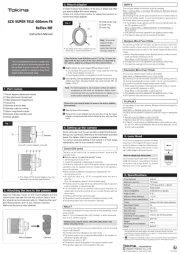
1 April 2025

1 April 2025

1 April 2025

1 April 2025

1 April 2025

25 Januari 2024

24 Januari 2024

24 Januari 2024

24 Januari 2024
Handleiding Lens
- Axis
- Cambo
- Teradek
- Kodak
- Metabones
- Pentax
- Hasselblad
- Vivitar
- Samyang
- TTArtisan
- ARRI
- Marshall
- OM SYSTEM
- Voigtlander
- Voigtlaender
Nieuwste handleidingen voor Lens
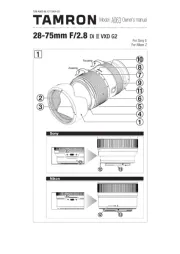
5 Augustus 2025
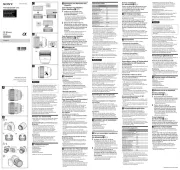
4 Augustus 2025
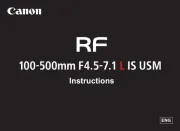
4 Augustus 2025
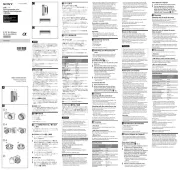
29 Juli 2025
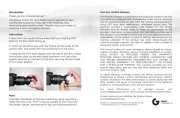
29 Juli 2025
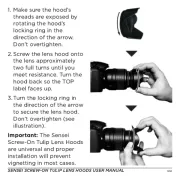
29 Juli 2025

29 Juli 2025

29 Juli 2025

29 Juli 2025

29 Juli 2025